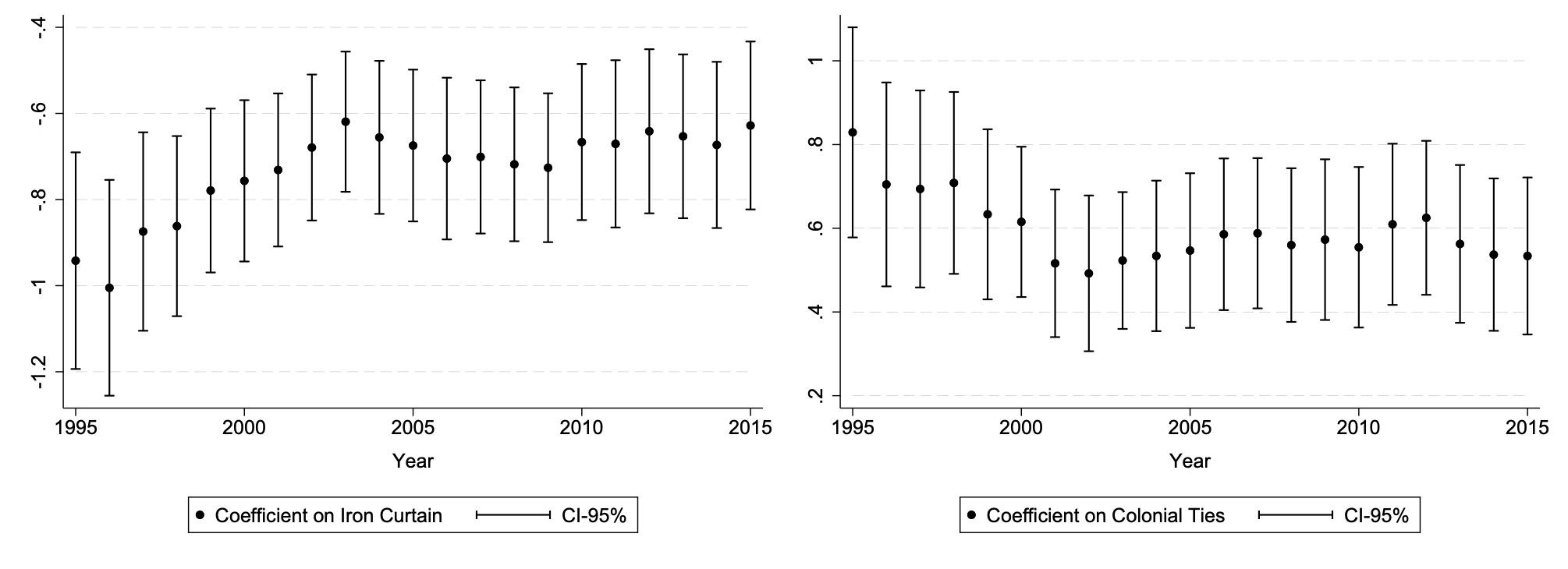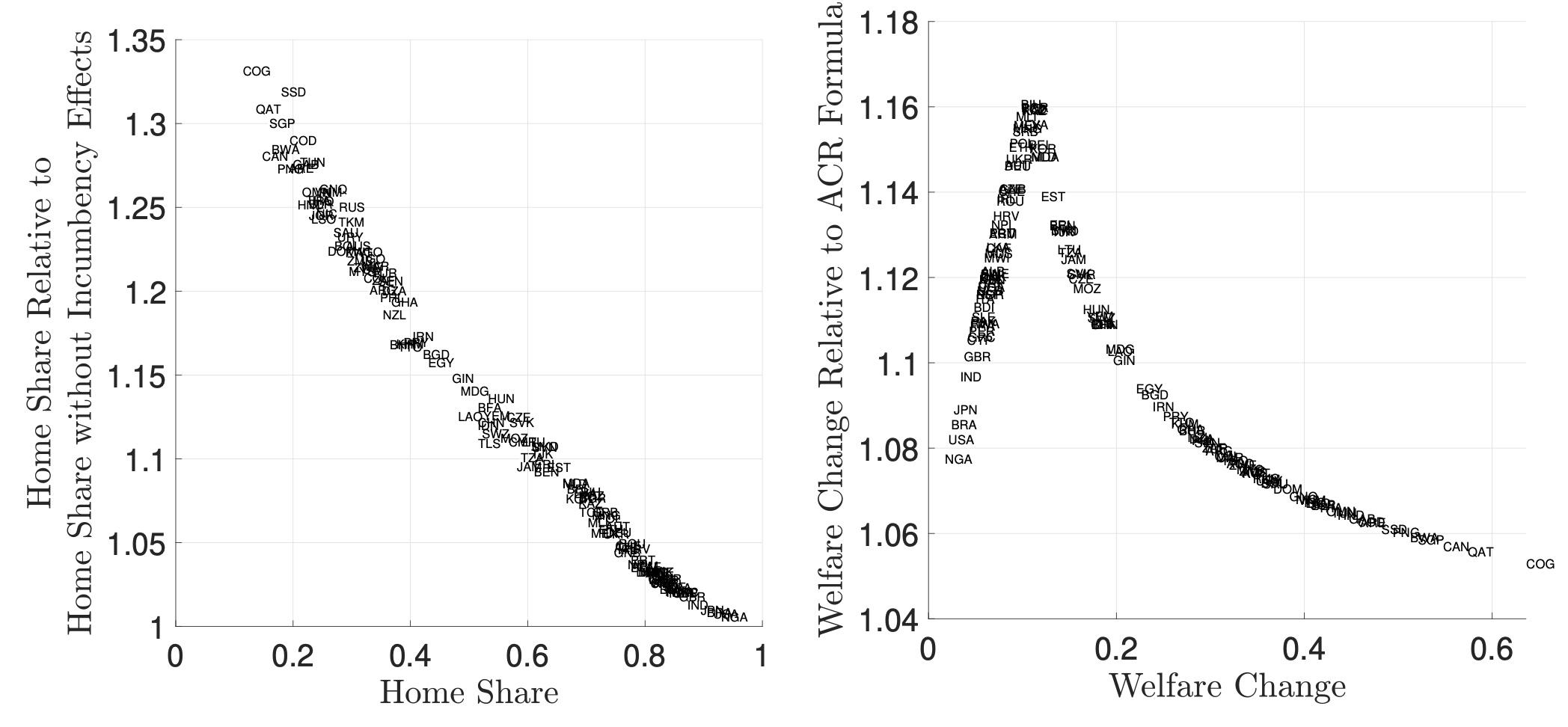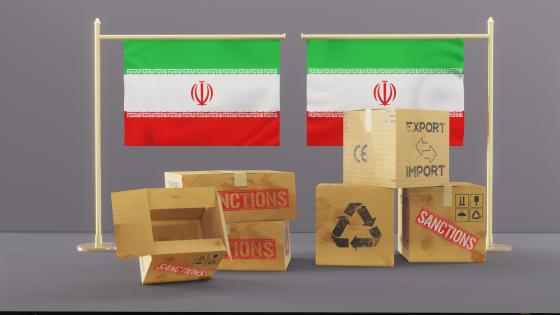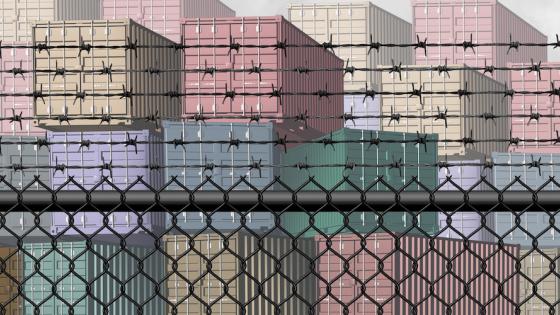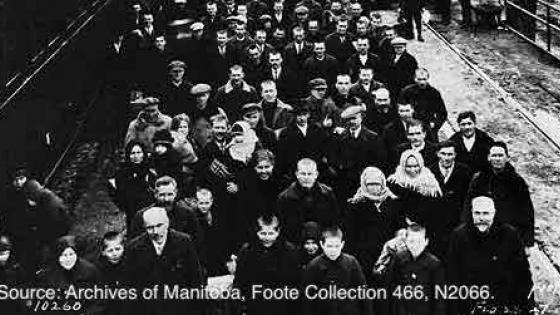Since the first wave of globalisation in the late 19th century, the world has seen an ever-deepening trade integration that allowed countries to reap the gains from specialisation and increasing returns. Yet, this integration remains far from perfect, and it was and is highly asymmetric with respect to both scope and timing.
A large ‘gravity’ literature helps us understand the welfare implications of (current) trade barriers (e.g. Eaton and Kortum 2002, Anderson and van Wincoop 2003, Melitz 2003, Chaney 2008, Arkolakis et al. 2012, Head and Mayer 2014, Costinot and Rodriguez-Claire 2014, Caliendo and Parro 2015). However, whether and how the timing of trade liberalisations matters for trade and the gains from trade today is much less understood. Empirically, two broad patterns stand out: First, the persistently large domestic expenditure shares (the ‘home share’) in international trade, i.e. the fact that countries intensively source tradeable goods domestically. Second, historic trade barriers tend to be associated with lower trade flows even decades after they were removed. Based on standard gravity regressions, for example, the Iron Curtain is associated with almost 50% less trade even today, while, conversely, historical colonial ties are associated with 70% more trade today (see Figure 1).
Figure 1 Historical trade barriers and trade flows today
Notes: This figure plots, for several years, the coefficient on dummy variables indicating whether a country pair was historically separated by the Iron Curtain (left panel) or had a colonial link (right panel). The regressions include exporter and importer dummy variables and controls for distance, common border, common official language, common currency, free trade agreements, and the absolute log difference in GDP per capita.
Sources: Own results based on data from The Atlas of Economic Complexity and CEPII.
In a recent paper (Egger et al. 2023), we argue that incumbency effects in international trade can help explain these patterns and that they have potentially profound consequences for the gains from trade and the costs of delayed trade integration. The basic idea is simple: when countries open up to trade gradually over time, firms that start serving foreign markets need to compete against domestic and potentially third-country incumbents. These incumbents have already built up a distribution network, got to know market structures, and established their brand. An extensive literature on industrial organisation shows how incumbency effects can deter entry (e.g. Noh and Moschini 2006, Goolsbee and Syverson 2008, Schivardi and Viviano 2011), and it is well known that sunk market-access costs can generate hysteresis effects in international trade and explain exporter dynamics (e.g. Baldwin 1988, Baldwin and Krugman 1989, Das et al. 2007, Ruhl and Willis 2017). We show that historical trade frictions can have lasting implications for aggregate trade due to the presence of incumbency effects. Furthermore, we show that incumbency effects give rise to novel distributional consequences of trade liberalisations. They shield firms from exiting and, hence, increase competition, which benefits real wages but lowers profits.
Gravity with history
Question and setup
What is the role of history in international trade? How do incumbent firms impact our predictions of the gains from trade liberalisation? To answer these questions, we develop a dynamic model of international trade with heterogeneous firms and many asymmetric countries. In our framework, incumbency advantages arise because firms face higher market-access costs upfront when entering a (foreign) market for the first time than in subsequent periods. Intuitively, setting up, e.g. a distribution network is costlier than maintaining it. When confronted with market entry by foreign competitors, incumbent firms therefore weigh discounted future profits against lower market-access costs. These differences between incumbents and entrants lead to fewer firm exits in the wake of foreign competition than in a world without incumbency advantages. We derive a gravity equation that explicitly accounts for these incumbency effects. It implies that, ceteris paribus, countries trade less if they liberalised their trade relationship later. As countries naturally started off trading with themselves, this can help explain the sizeable domestic expenditure shares in the data. More generally, it implies that trade flows are shaped not only by trade frictions today – as (implicitly) assumed in standard gravity equations – but also depend on the history of trade liberalisations. In other words, there is a strong path dependence in international trade.
Empirical relevance
Our gravity equation can be estimated following standard steps from the literature, and it maps precisely onto the empirical specification underlying Figure 1. Our theory can thus help explain the sizable and long-lasting implications of the Iron Curtain and colonial ties on trade. There may, however, be other channels through which these historical trade barriers impact trade today. We exploit the structure of our model to provide suggestive evidence for our main mechanism. Specifically, our theory predicts that incumbency effects become less important for firms that benefit from a positive trade shock in a market. We derive a regression equation that maps such changes in the importance of tenure to average firm sales. Looking at positive trade shocks defined as relatively large tariff cuts, we find evidence in line with the model’s predictions. Interestingly, this implies that incumbency effects lower the positive trade effect of a decrease in variable trade costs.
The gains from trade
These effects have profound consequences. We derive an augmented ACR formula (Arkolakis et al. 2012) for the gains from trade and show that incumbency effects amplify the costs of moving to autarky, and more so the smaller a country’s home share. Intuitively, shutting down trade destroys sunk upfront investments in accessing foreign markets, and this is the costlier, the more important foreign markets are for a country’s total sales (i.e. the smaller its home share). To further assess the importance of our mechanism, we perform a quantification exercise that yields two main insights. First, our mechanism explains up to 25% of a country’s home share (see Figure 2, left panel). Second, the welfare gains from trade are, on average, 10% larger when allowing for incumbency effects (see Figure 2, right panel). The impact of incumbency effects on the welfare gains from trade is hump-shaped with respect to the home share. Intuitively, for very low home shares, a country’s sales are dominated by exports, whereas for very high home shares, there is little competitive pressure from foreign suppliers. In either case, incumbency effects in the domestic market have a limited impact on a country’s global sales and, hence, its gains from trade.
Figure 2 Incumbency effects and the welfare gains from trade
Notes: This figure summarises the results of our quantitative investigation of the gains from trade and the relation to incumbency effects. The left panel divides the home shares by their respective counterparts from a version of the model without incumbency effects. The right panel shows the difference between the welfare gains and the ACR formula in the presence of incumbency effects.
Conclusion
Trade is an important driver of long-run growth and prosperity. It allows countries to reap the gains from specialisation and from increasing returns, and the most productive firms to reach global markets. Yet, the gains from trade are not distributed equally, and this is a constant matter of concern. We show that accounting for incumbency effects is important in this regard for two reasons: Across countries, they imply that it is more difficult for latecomers to fully participate in the gains from trade. Within countries, they tend to increase the gains from trade liberalisations for workers vis-à-vis firms. Our work further shows how incumbency effects caution against current ambitions of reshoring production, as negative trade shocks destroy sunk upfront investments in accessing foreign markets.
References
Allen, T and D Donaldson (2020), “Persistence and Path Dependence in the Spatial Economy”, NBER Working Paper No. 28059.
Anderson, J E and E van Wincoop (2003), “Gravity with Gravitas: A Solution to the Border Puzzle”, American Economic Review 93(1): 170–192.
Arkolakis, C, A Costinot and A Rodríguez-Clare (2012), “New Trade Models, Same Old Gains?”, American Economic Review 102(1): 94–130.
Atkin, D, A Costinot and M Fukui (2021), “Globalization and the Ladder of Development: Pushed to the Top or Held at the Bottom?”, NBER Working Paper No. 29500.
Baldwin, R (1988), “Hysteresis in Import Prices: The Beachhead Effect”, The American Economic Review 78(4): 773–785.
Baldwin, R and P Krugman (1989), “Persistent Trade Effects of Large Exchange Rate Shocks”, The Quarterly Journal of Economics 104(4): 635–654.
Buera, F J and E Oberfield (2020), “The Global Diffusion of Ideas”, Econometrica 88(1): 83–114.
Caliendo, L, L D Opromolla, F Parro, and A Sforza (2021), “Goods and Factor Market Integration: A Quantitative Assessment of the EU Enlargement”, Journal of Political Economy 129(12): 3491–3545.
Caliendo, L and F Parro (2015), “Estimates of the Trade and Welfare Effects of NAFTA”, The Review of Economic Studies 82(1): 1–44.
Chaney, T (2008), “Distorted Gravity: The Intensive and Extensive Margins of International Trade”, American Economic Review 98(4): 1707–1721.
Costinot, A and A Rodríguez-Clare (2014), “Trade Theory with Numbers: Quantifying the Consequences of Globalization”, in Handbook of International Economics (4): 197–261.
Das, S, M J Roberts and J R Tybout (2007), “Market Entry Costs, Producer Heterogeneity, and Export Dynamics”, Econometrica 75(3): 837–873.
Eaton, J and S Kortum (2002), “Technology, Geography, and Trade”, Econometrica 70(5): 1741–1779.
Goolsbee, A and C Syverson (2008), “How Do Incumbents Respond to the Threat of Entry? Evidence from the Major Airlines”, The Quarterly Journal of Economics 123(4): 1611–1633.
Head, K and T Mayer (2014), “Gravity Equations: Workhorse, Toolkit, and Cookbook”, in Gopinath, G, E Helpman and K Rogoff (eds), Handbook of International Economics 4(3): 131–195.
Melitz, M J (2003), “The Impact of Trade on Intra-Industry Reallocations and Aggregate Industry Productivity”, Econometrica 71(6): 1695–1725.
Noh, Y-H and G Moschini (2006), “Vertical Product Differentiation, Entry-Deterrence Strategies, and Entry Qualities”, Review of Industrial Organization 29(3): 227–252.
Ruhl, K J and J L Willis (2017), “New Exporter Dynamics”, International Economic Review 58(3): 703–726.
Schivardi, F and E Viviano (2011), “Entry Barriers in Retail Trade”, The Economic Journal 121(551): 145–170.





